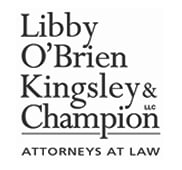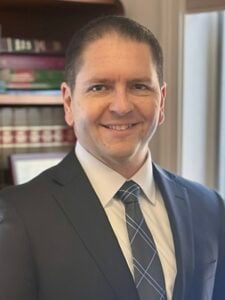In response to the novel coronavirus (COVID-19) pandemic, Congress passed the Families First Coronavirus Response Act (FFCRA). FFCRA went into effect on April 1, 2020 and provides that covered employers with fewer than 500 employees must provide up to two weeks of emergency paid sick leave and up to twelve weeks of expanded family medical leave to covered employees when certain requirements are met.
Emergency paid sick leave is available to a covered employee is who is unable to work because the employee:
- Is subject to a federal, state or local quarantine or isolation order.
- Has been advised by a health care provider to self-quarantine.
- Is experiencing symptoms associated with COVID-19 and is seeking a medical diagnosis.
- Is caring for an individual subject to a quarantine or isolation order.
- Is caring for a child whose school or place of care is closed or unavailable due to coronavirus-related reasons.
- Is experiencing any other substantially similar condition specified by the U.S. Department of Health and Human Services. The agency has not specified any other substantially similar condition as of yet.
For reasons (1) through (3), the amount of pay is calculated based upon the employee’s regular rate of pay or the applicable state or federal minimum wage (whichever is higher), up to $511 daily and $5,110 total. For reasons (4) through (6), the amount of pay is two-thirds of the employee’s regular rate of pay or the applicable state or federal minimum wage (whichever is higher), up to $200 per day or $2,000 total.
Expanded family and medical leave is available to a covered employee for reason (5) above, i.e., that the employee is caring for a child whose school or place of care is closed or unavailable due to coronavirus-related reasons. The first two weeks of expanded family medical leave is unpaid, and the remaining 10 weeks are paid at two-thirds of the employee’s regular rate of pay or the applicable state or federal minimum wage (whichever is higher), up to $200 per day or $10,000 total. The idea behind having the first two weeks be unpaid is that the employee may elect to use his or her two weeks of paid sick leave to cover the unpaid period.
The Wage and Hour Division of the Department of Labor has been tasked with enforcing FFCRA’s emergency paid sick leave and expanded family medical leave provisions. The Department of Labor website has many resources for employees and employers, including Fact Sheets, an extensive list of Questions and Answers, and posters that must be posted in a conspicuous location. On April 1, 2020, the Department of Labor posted a 124-page temporary rule providing guidance on FFCRA, which was then replaced on April 2, 2020 with a draft of the final rule. The draft final rule is scheduled to be published on April 6th, with an effective date of April 2nd.
Importantly for employers, the draft final rule describes the documentation needed to support an employee’s request for paid sick leave or expanded family medical leave as follows:
An employee must provide his or her employer documentation in support of paid sick leave or expanded family and medical leave. As provided in § 826.100, such documentation must include a signed statement containing the following information: (1) the employee’s name; (2) the date(s) for which leave is requested; (3) the COVID-19 qualifying reason for leave; and (4) a statement representing that the employee is unable to work or telework because of the COVID-19 qualifying reason.
An employee must provide additional documentation depending on the COVID-19 qualifying reason for leave. An employee requesting paid sick leave under § 826.20(a)(1)(i) must provide the name of the government entity that issued the quarantine or isolation order to which the employee is subject. An employee requesting paid sick leave under § 826.20(a)(1)(ii) must provide the name of the health care provider who advised him or her to self-quarantine for COVID-19 related reasons. An employee requesting paid sick leave under § 826.20(a)(1)(iv) to care for an individual must provide either (1) the government entity that issued the quarantine or isolation order to which the individual is subject or (2) the name of the health care provider who advised the individual to self-quarantine, depending on the precise reason for the request. An employee requesting to take paid sick leave under § 826.20(a)(1)(v) or expanded family and medical leave to care for his or her child must provide the following information: (1) the name of the child being cared for; (2) the name of the school, place of care, or child care provider that closed or became unavailable due to COVID-19 reasons; and (3) a statement representing that no other suitable person is available to care for the child during the period of requested leave. For leave taken under the FMLA for an employee’s own serious health condition related to COVID-19, or to care for the employee’s spouse, son, daughter, or parent with a serious health condition related to COVID-19, the normal FMLA certification requirements still apply. See 29 CFR 825.306.
29 C.F.R. Pt. 826(III)(J) (draft final rule, Apr. 2, 2020). The draft final rule also addresses many other questions that are likely to arise, such as intermittent leave, notice requirements, definitions of key terms, the interplay between different types of leave, and other matters. Relatedly, the Internal Revenue Service has posted guidance for COVID-19-related tax credits available to businesses under FFCRA.
This article is for informational and educational purposes and is not intended to be legal advice. You should consult with legal counsel to assess the legal issues specific to your case. The attorneys at Libby, O’Brien, Kingsley & Champion have extensive experience in employment law, including advising clients regarding the Families First Coronavirus Response Act.

